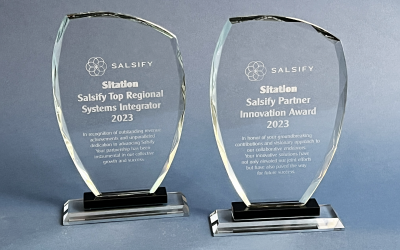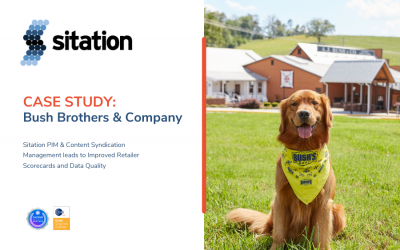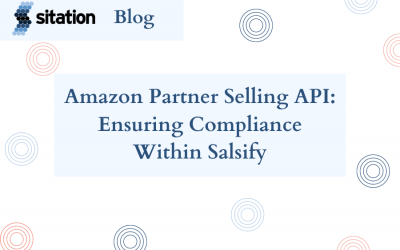If you’re falling behind in e-commerce due to lack of product data coordination, Salsify’s Product Information Management (PIM) tool will streamline your data creation and may decrease costs and increase revenue by establishing a central source of truth company-wide. Salsify creates a data library for your e-commerce, sales, and marketing teams to collaborate and maintain consistency across your digital sales efforts.
Begin your Salsify implementation by drawing your technology ecosystem, often called a System Architecture Diagram or Implementation Diagram. You’ll refer to this artwork throughout implementation and it will clarify the following key questions before you start:
- Who owns the PIM for setting policy and maintaining security
- Who needs access
- What other systems will connect to the PIM
- When/How Often data is pushed in or out
- Where the PIM fits into your existing technology ecosystem
- Identify “upstream” systems that will connect to Salsify for data coming in, and “downstream” systems for data flowing out
You can doodle on a napkin, use a software program that draws shapes and arrows (like Microsoft Word), or perhaps you have access to a robust charting tool (such as Gliffy). The message is more important than the medium! You might find it easiest to collaborate with others by drawing things out on a whiteboard before drawing it out in a software program. Just remember to save a photo of the diagram before it’s washed away!
As you begin drawing, think about end-to-end data flow – where does data originate, and how does it move through your company? Who needs data from the PIM (including digital assets)?
Draw a box for Salsify, and arrange your other systems and people/teams around it. Any system or person that must DIRECTLY CONNECT to Salsify must be in the diagram. You can expand beyond those first level connections if you choose (i.e. Salsify feeds to System A and then System A feeds to System B, therefore Salsify indirectly has an impact on System B).
Here are systems that may be in an ecosystem diagram depending on the complexity of data usage in your organization:
- ERP (Master Data)
- Digital Asset Management (DAM)
- FTP/Hotfolder/File Drop locations
- Global Data Synchronization Networks
- Salsify is a GS1 Certified data pool, so you can incorporate GDSN into your Salsify implementation, too!
- Warehouse Management System (WMS)
- Customer Relationship Management (CRM)
- Content Management System (CMS)
- Company Websites/Databases
- Shopify, BigCommerce, and Magento commonly connect to Salsify
- Marketing/Social Media Management platforms
- Critical Retailer/Customer Endpoints
- People/Teams that manually input/export data such as Brand, Sales, and Marketing teams
Add your name to the diagram for record keeping, and assign a Version Code and/or Date for tracking because you should dust off your diagram every 6-12 months and update it.
When you’re satisfied with your drawing, share it with your Salsify project stakeholders to gather feedback. Bring the final version to all Salsify implementation meetings to ensure your inbound and outbound connections are being addressed, integrated appropriately, and fully tested.
Here is an example of a basic Salsify Implementation diagram:
If you are sunsetting any systems currently in use in favor of Salsify, you should include them in the periphery of the diagram so at least they are represented, even if not connected to anything. It’s important to document them during implementation because you may be doing a one-time data dump from that old system to Salsify before you shut it down. When Salsify is good to go, you can remove old systems from the diagram next time you update it.
If you’re at a very large company, you will likely have many people involved in your drawing exercise, and the shapes and icons in the drawing become more important. There are commonly accepted practices for the meaning of flowchart shapes and pictograms. That was not the focus of this article, so simply be aware of it if you are tasked with drawing a data flow diagram at an enterprise-level company. Someone might get upset if you use the “merge” shape when it is supposed to be a “manual operation” step!
In conclusion, you’re now an expert on the bare bones of preparing a diagram to guide Salsify implementation! Grab some paper and crayons and get started! There is no such thing as too small of a company to have a technology diagram. Drawing out your data flow often helps you realize your tech stack is much more complex than you thought, which is a good thing to work out before you begin a PIM implementation.
Reach out to the Salsify-certified PIM experts at Sitation for help with your Salsify implementation! We’ll help you with your systems architecture diagram and are here to guide you through Salsify onboarding, data modeling and remodeling, user training, special projects, managed services, and more. We look forward to working with you.




